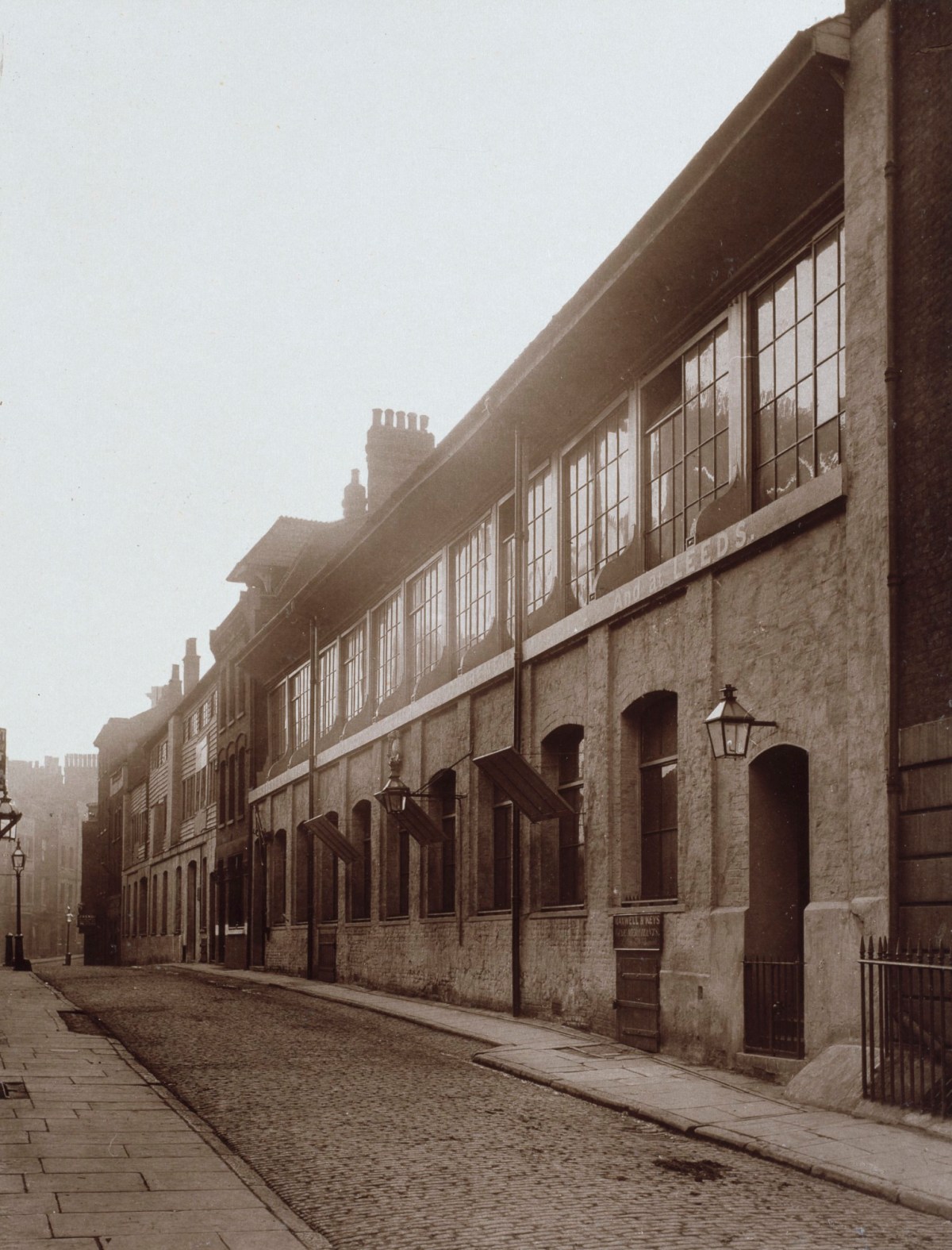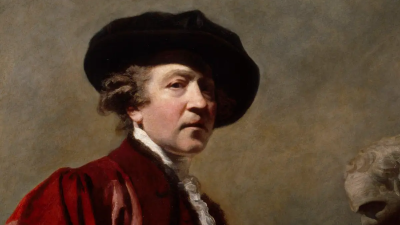
Henry Dixon & Son, Tennis Court, James Street, Haymarket, ca.1886.
Carbon print mounted on card. 223 mm x 172 mm. © Photo: Royal Academy of Arts, London. Photographer: Prudence Cuming Associates Limited.
This image is not available to download. To licence this image for commercial purposes, contact our Picture Library at picturelibrary@royalacademy.org.uk
Tennis Court, James Street, Haymarket, ca.1886
From: Henry Dixon & Son
RA Collection: Art
"An inscription on a stone let into the wall of the Tennis Court, gives 1673 as the date of James Street. The Tennis Court is, however, older, and appears to have formed part of Piccadilly Hall, a celebrated gaming house established about 1635, spoken of by Lord Clarendon in his History of the Rebellion as "a fair house for entertainment and gaming, with handsome gravel walks with shade, and where were an upper and lower bowling green, whither very many of the nobility and gentry of the best quality resorted, both for exercise and conversation." The grace of the stately Clarendon's description is a little marred by an anecdote of Aubrey, who describes the sisters of Sir John Suckling, the poet, "coming to Peccadillo Bowling-green, crying for the feare he should lose all their portions." The insertion of windows in the lower part of the structure, and the glazing of the openings above, has destroyed much of the character of the building, which, however, still shows the main lines of a Tennis Court like that at Hampton Court. The building was used for its original purpose up to 1867 or 1868, after which it came into the occupation of the firm of army clothiers, who still carry on business here. They courteously allowed me to inspect, and showed me a coloured view of it - "The interior of the Fives Court, with Randall and Turner sparring, " engraved by T. Blake, 1825. There was, till recently, a fine air of sport about James Street; in addition to the Tennis Court there existed at No. 8, till 1878, " Fencing Rooms, " which rightly or not, I have always considered the original of George's shooting gallery in Dicken's Bleak House. The timber-fronted building in the distance, separated from the Tennis Court by a small brick house, is still known as "the barn." It is, very probably, another relic of the glories of Piccadilly Hall."
The above is a description, by Alfred Marks, was taken from the letterpress which accompanies the photographs. Built in brick with a tiled roof, c.1634 by Simon Osbaldeston, the tennis court, according to Edward Walford, was one of the favourite haunts of Charles II and from 1800 it became the headquarters of tennis in England. However when the building closed as a tennis court in 1866, the building became a store for military clothing. By 1911 the building was being used by a wholesale bookseller, after which it is not clear when it finally disappeared. An illustration which appeared in Old and New London of 1878 shows the building prior the alterations to the upper windows. According to Notes and Queries Dixon's photograph was taken from the north-west corner of the street (now Orange Street) which ran from Whitcomb Street to Haymarket and it emphasizes the fenestration of the building showing light hitting the glass of the upper windows, Attached to the courts was Shaver's Hall, a gaming house at the northeast corner of the Haymarket and Coventry Street, which Mark's refers to as Piccadilly Hall. Confusingly although Shaver's Hall later became known as Piccadilly Hall, it was once a name associated with a nearby property with a tennis court in Great Windmill Street which is now the Trocadero.The engraving which Marks mentions was probably of the Fives Court (a boxing arena) in St Martin's Lane.
Object details
223 mm x 172 mm
Start exploring the RA Collection
- Explore art works, paint-smeared palettes, scribbled letters and more...
- Artists and architects have run the RA for 250 years.
Our Collection is a record of them.



